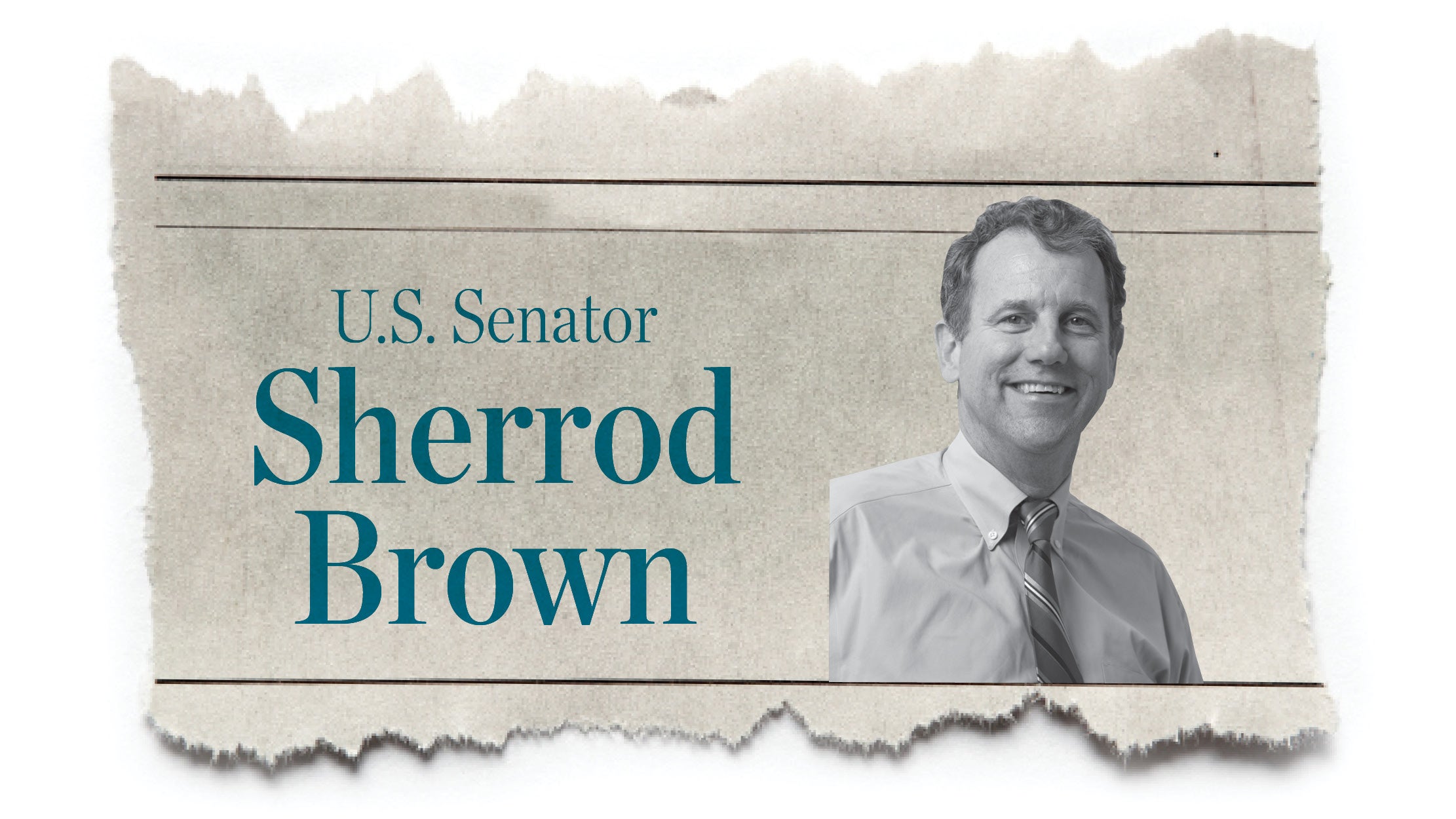‘He will come again!’
Published 9:18 am Saturday, October 6, 2018
Tuesday, Oct. 5, 1813: Shawnee leader Tecumseh killed at Battle of the Thames
In March 1768, Pucksinwah and Methotasa and other Shawnee were on their way to Chillicothe.
Five different Shawnee towns in Ohio were called Chillicothe and the one these Shawnee were traveling to was located at the present Ohio site of Oldtown in Greene County, near the confluence of Massie’s Creek and the Little Miami River.
This Chillicothe (the fourth so named) was three miles north of Xenia in southwest Ohio. It was named after the Shawnee’s Chalahgawtha clan.
The Shawnee party stopped there as Methostasa was about to have a baby. Pucksinwah, his son, Chiksika, daughter, Tecumapese, and some Shawnee women stayed behind to attend Methotasa’s delivery. A flashing meteor passed across the sky that evening. The baby boy was named Tecumseh, the “Shooting Star” or “Flying Catamount.”
The Shawnee clans had been meeting at Oldtown for five years to decide what to do about white encroachment into their lands. In 1774, during Lord Dunmore’s war, Tecumseh’s father died in battle at Point Pleasant (now West Virginia).
At his father’s death, Tecumseh was six years old. Shocked by his brother Chiksika, Tecumseh heard that whites were even settling in Can-tuc-kee.
In 1783, at age 15, Tecumseh participated in his first battle, killing four whites. At this time, he saw a white man burned while still alive. He swore an oath at that moment against torture and kept his word his entire life. At age 20, he lost his brother and began his ascent to Shawnee leadership.
Tecumseh began to devise a plan that, if successful, would result in the westward-moving whites being pushed east of the mountains. Indian towns had been burned, women and children slain and crops completely destroyed. By 1810, this great Shawnee chieftain travelled to many Indian tribes in an attempt to devise an Indian federation or Indian United Nations.
He was trying to get all the Indian tribes to unite under his leadership. He would eventually be recognized as titular chief over 32 separate tribes.
Tecumseh urged his Indian allies to reject the white man and all of his works. He advised them to give up firewater, the white man’s tools and skills.
As Tecumseh’s following increased, he moved his Shawnee clan to Deer Creek near present London, Ohio. He was enjoying great success as a leader, with two exceptions. His younger brother was called Lowaluwaysica. Whites called him the Shawnee prophet, because it was thought he could predict the future. He had lost an eye in a drunken brawl. His right eye always appeared to be closed.
Besides being an alcoholic, Tecumseh’s brother was an epileptic. While lighting his pipe, he collapsed and the Indians thought he had died. He awoke and told the Shawnee he had returned from the “Master of Life” and was now a prophet whose name was Tenskwatawa, the “Open Door.” He began preaching to the Indians to reject the influences and customs of the white man.
The prophet claimed he had the power to heal diseases and that he could stop the white man’s bullets. Tecumseh and Tenskwatawa travelled together to organize an Indian Confederation.
Tecumseh provided oratory and political reasoning; Tenskwatawa would engage in revivalism. With their dream of Indian unity, the two bothers established a new Indian town, Tippecanoe, or Prophetstown, at the junction of Tippecanoe Creek and the Wabash River in northern Indiana.
The brothers’ chief white adversary was William Henry Harrison. He was appointed governor of Indiana Territory. Harrison gathered some Indians that he called “the most dangerous wretches on earth” and convinced them to sign away three million acres, intruding into the heart of Tecumseh and the Shawnee’s and coming within 50 miles of Tippecanoe creek.
The governor paid these Indians $7,000 in cash and an annuity of $1,750 for the Indiana land. Tecumseh had asked Harrison to quit taking and buying Indiana land, and tried to reason with him by explaining that Indian lands could not be sold by individual tribes or chiefs, because the land was owned by all Indians in common.
Harrison had been seriously alarmed by the brothers’ efforts to unite the tribes. He challenged the prophet to perform a miracle and asked him to “cause the son to stand still.”
At 11:30 a.m. on the morning of June 16, 1806, Tenskwatawa pointed his finger at the sun and darkness fell. He said the “Master of Life” would bring back the sun. The eclipse was not a mystical surprise, because Tecumseh had read about its coming and conveyed the information to his brother to enhance his image among the Shawnee. The Shawnee fell under the spell of the prophet and Harrison began to worry about the new threat.
In 1811, Tecumseh headed south to win alliances with the Creeks, Cherokees, Choctaws and Chickasaws. He had warned his brother not to conduct any fighting in his absence.
The governor gathered 1,000 men, volunteers with little experience, and marched toward Prophetstown. On Nov. 6, 1811, Harrison and his army made camp along Tippecanoe Creek.
That night, the Prophet sent three men to Harrison, asking for a peace conference the next morning. Harrison told his soldiers to “sleep upon their arms.”
At the urging of some young braves, Tenskwatawa prepared to attack the army, who were three-fourths of a mile away at 3:45 a.m. on Nov. 7.
He told the Indians that they would be immune to the white man’s bullets and that, at that moment, many of the whites were already dead.
The Indians attacked over and over until daybreak. They fired upon the army sporadically all day long, but Harrison’s troops fought well.
That night, the Indians left and on Nov. 8, the army took what supplies they could carry, burned the Indian town and headed home.
Tecumseh returned four days after the battle and shook Tenskwatawa by the hair of the head until his nose bled.
Tecumseh said death would be too easy, so he banished his brother from their lands and declared him no longer an Indian.
Tenskwatawa went to Kansas and led an obscure life. In one day, he had destroyed what had taken Tecumseh 10 years to build.
Tecumseh knew his Indian federation would be fragmented after this battle, so he turned to British garrisons in Canada to seek allies for the forthcoming War of 1812.
The war of 1812 was declared on June 18, 1812. The military key to the whole northwest was naval control of the Great Lakes. On Sept. 10, 1813, Capt. Robert Barclay brought the British fleet to Put-in-Bay to contest the nine American ships of Oliver H. Perry. Barclay would finally surrender and the battle was over before dusk. British Gen. Henry Proctor, upon hearing of Barclay’s defeat, prepared to leave Fort Malden on the western shore of Lake Erie and abandon Tecumseh and his warriors. Tecumseh knew he had to accompany the British in their flight.
When Harrison heard of Fort Malden’s evacuation, he moved to attack Proctor, who Tecumseh persuaded to make a stand.
On Oct. 4, Proctor and Tecumseh arrived at Thamesville on the Thames River and prepared for battle. On the night of Oct. 4, Tecumseh gathered his warriors. He took off his sword, denoting his rank as brigadier general in the British army and said, “When my son becomes a noted warrior, give him this.”
He then told them that he would die there. The American army saw Proctor flee, captured $1 million worth of supplies and took hundreds of prisoners.
Tecumseh could be heard during the battle encouraging his men. Both American and cavalry infantry attacked and Tecumseh was killed. His body was never found and his final resting place remains a mystery yet today.
The Shawnee believed a star would pass across the sky and Tecumseh would come again to lead his people to “one town of towns” for all Indians.
Bob Leith is retired as history teacher at Ironton High school, Ohio University Southern and University of Rio Grande





